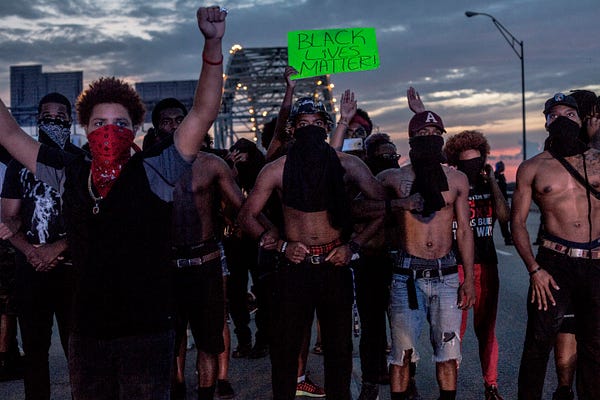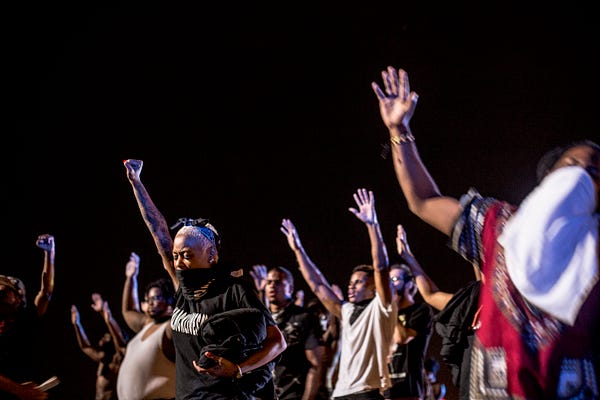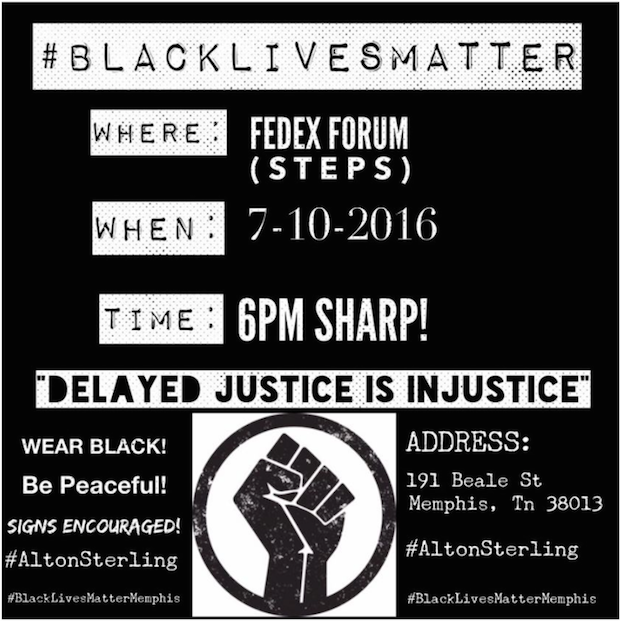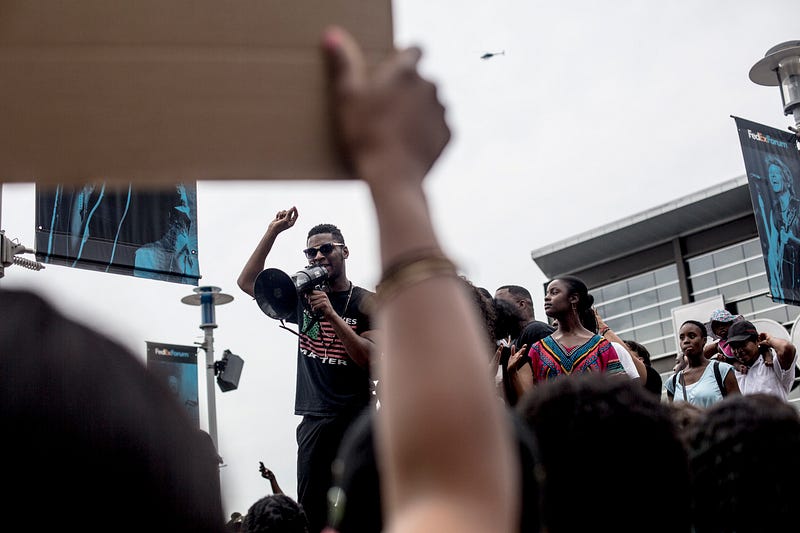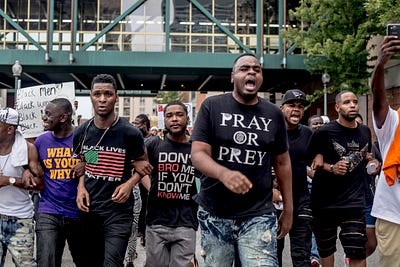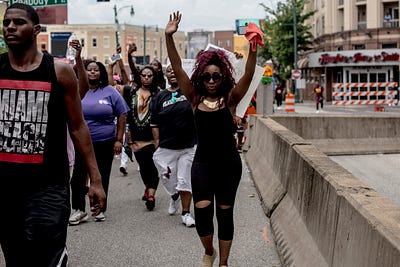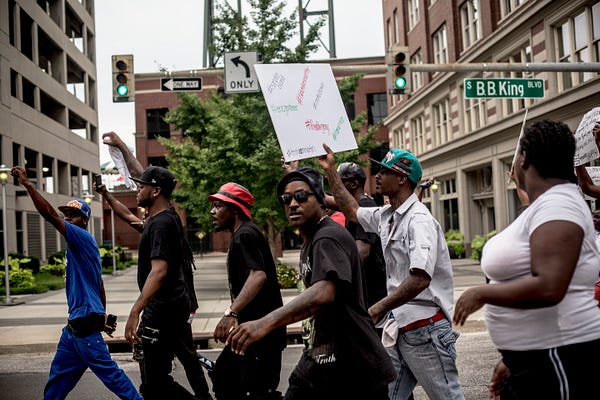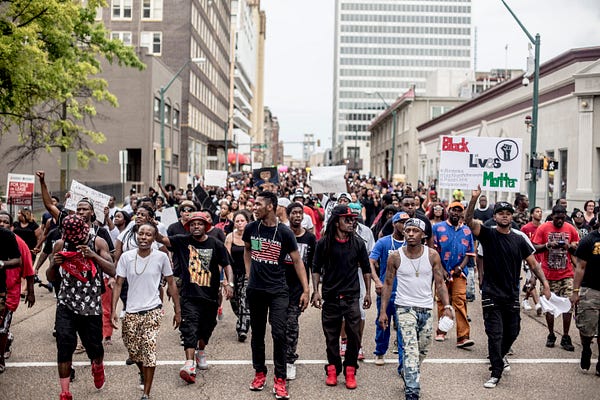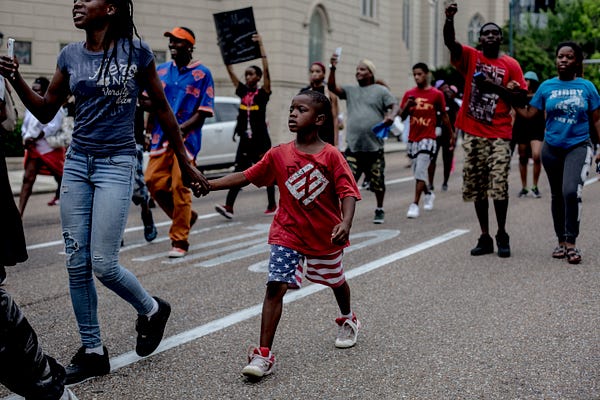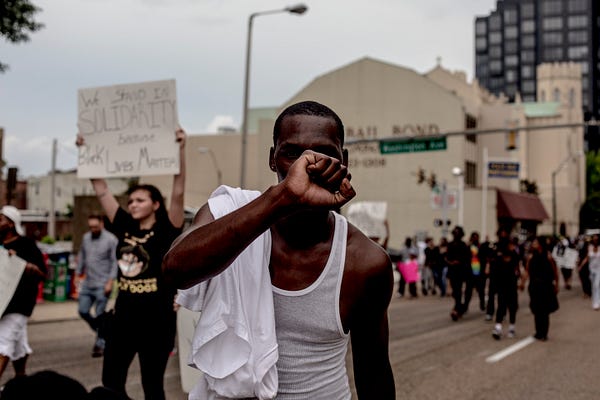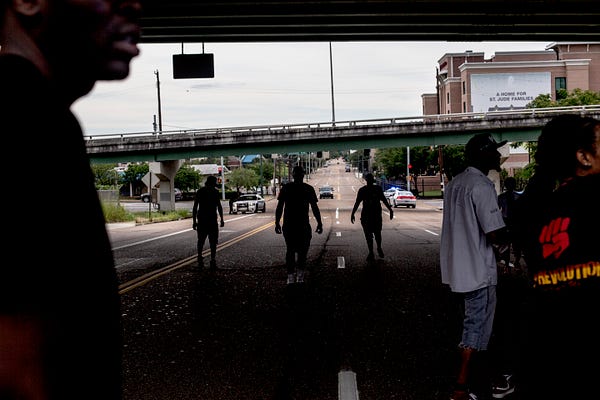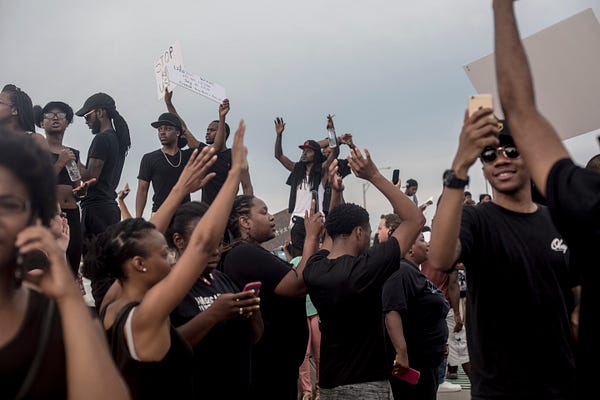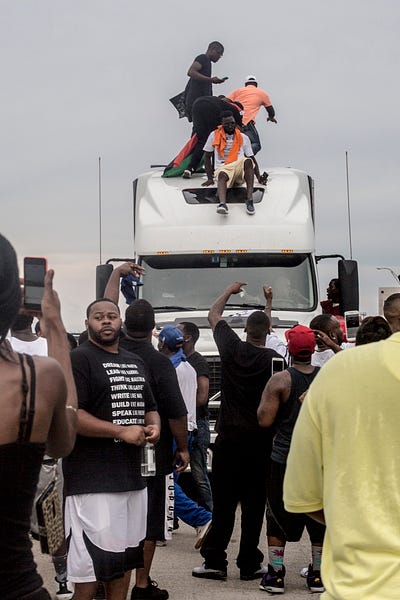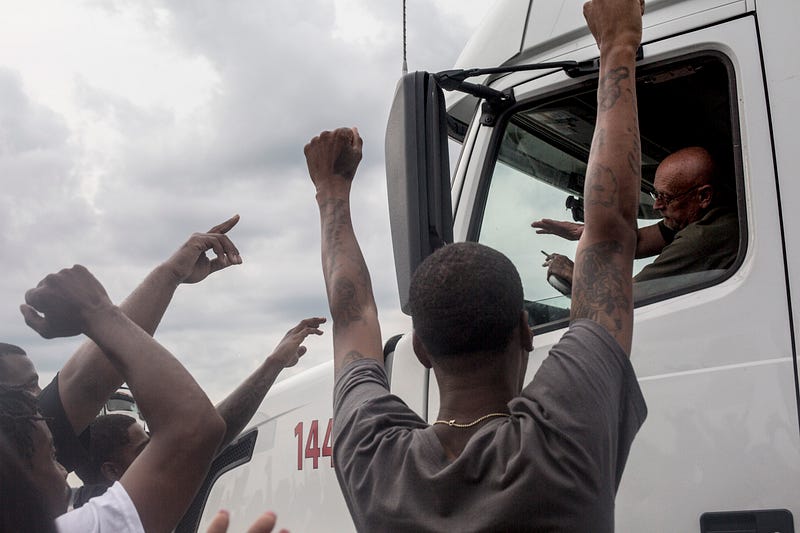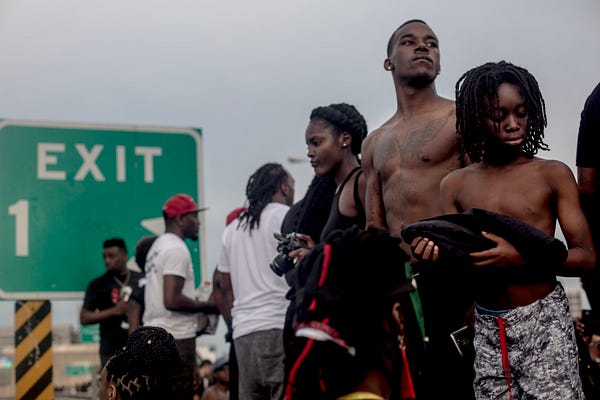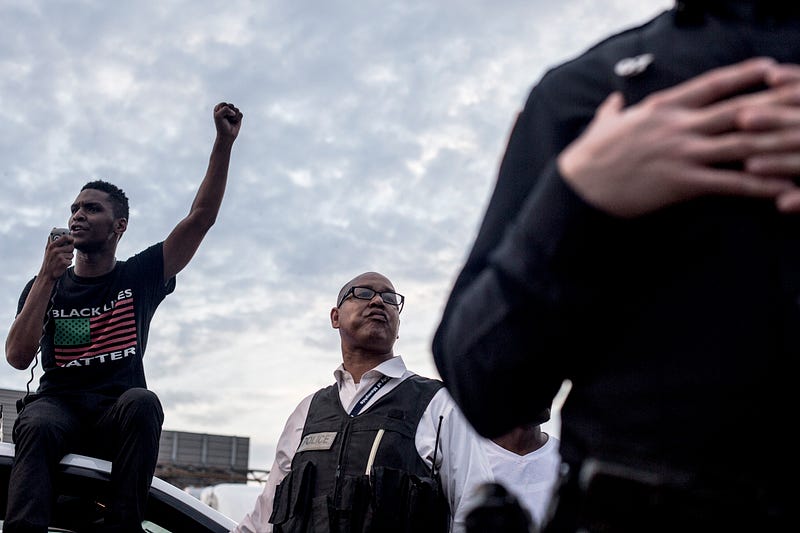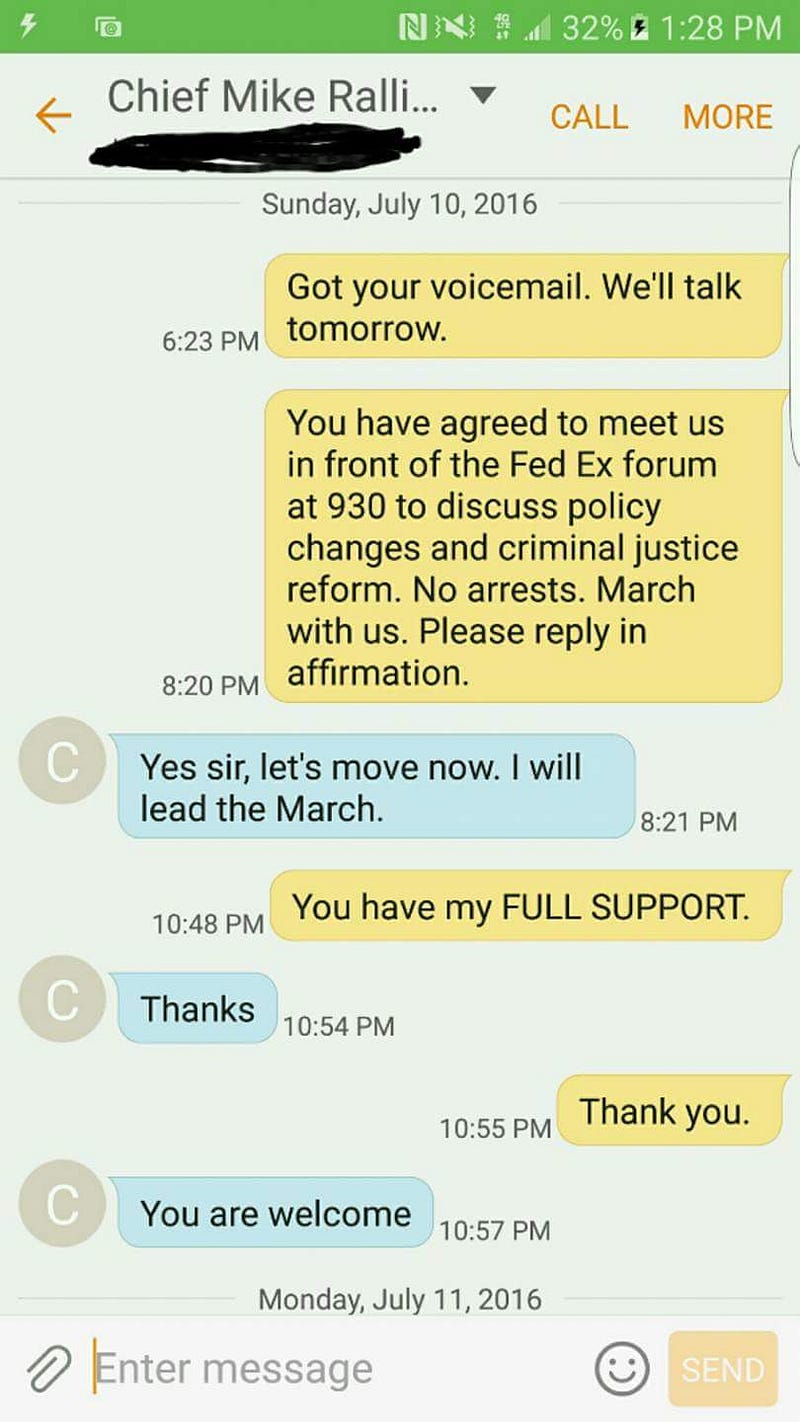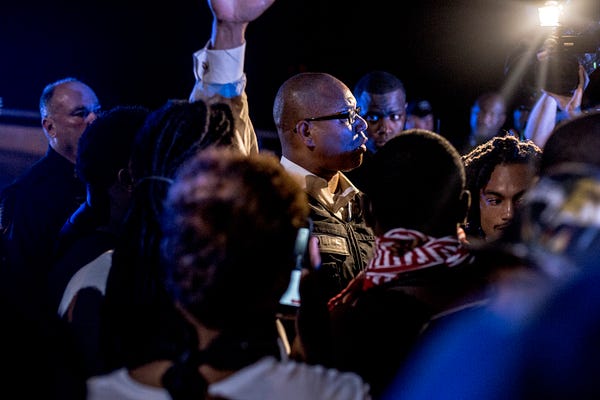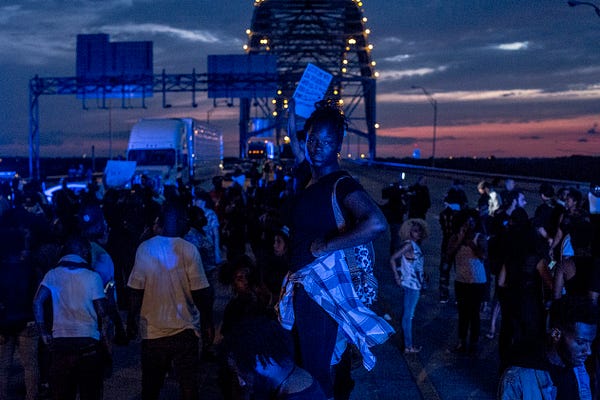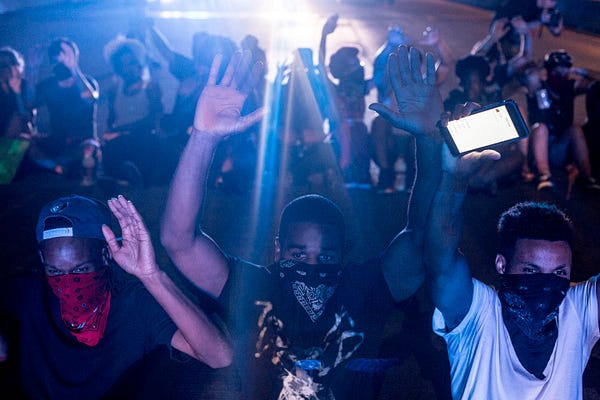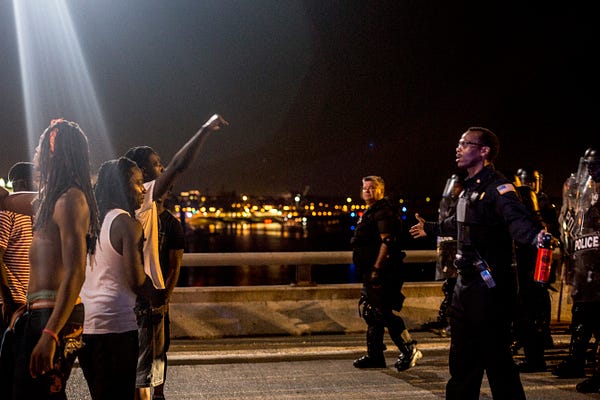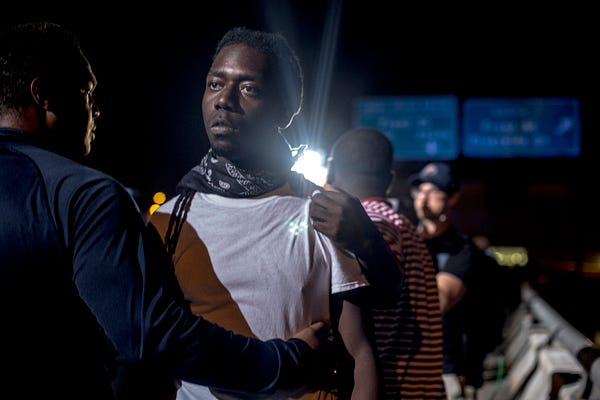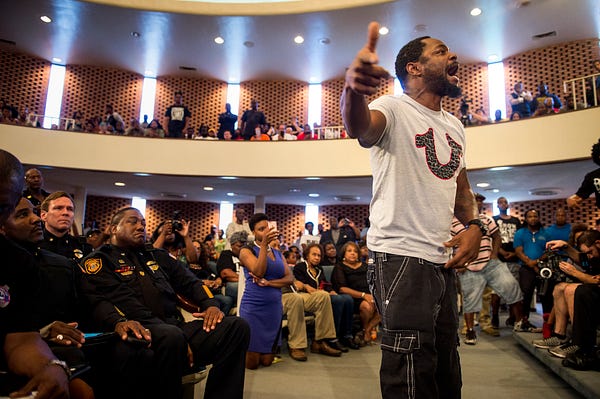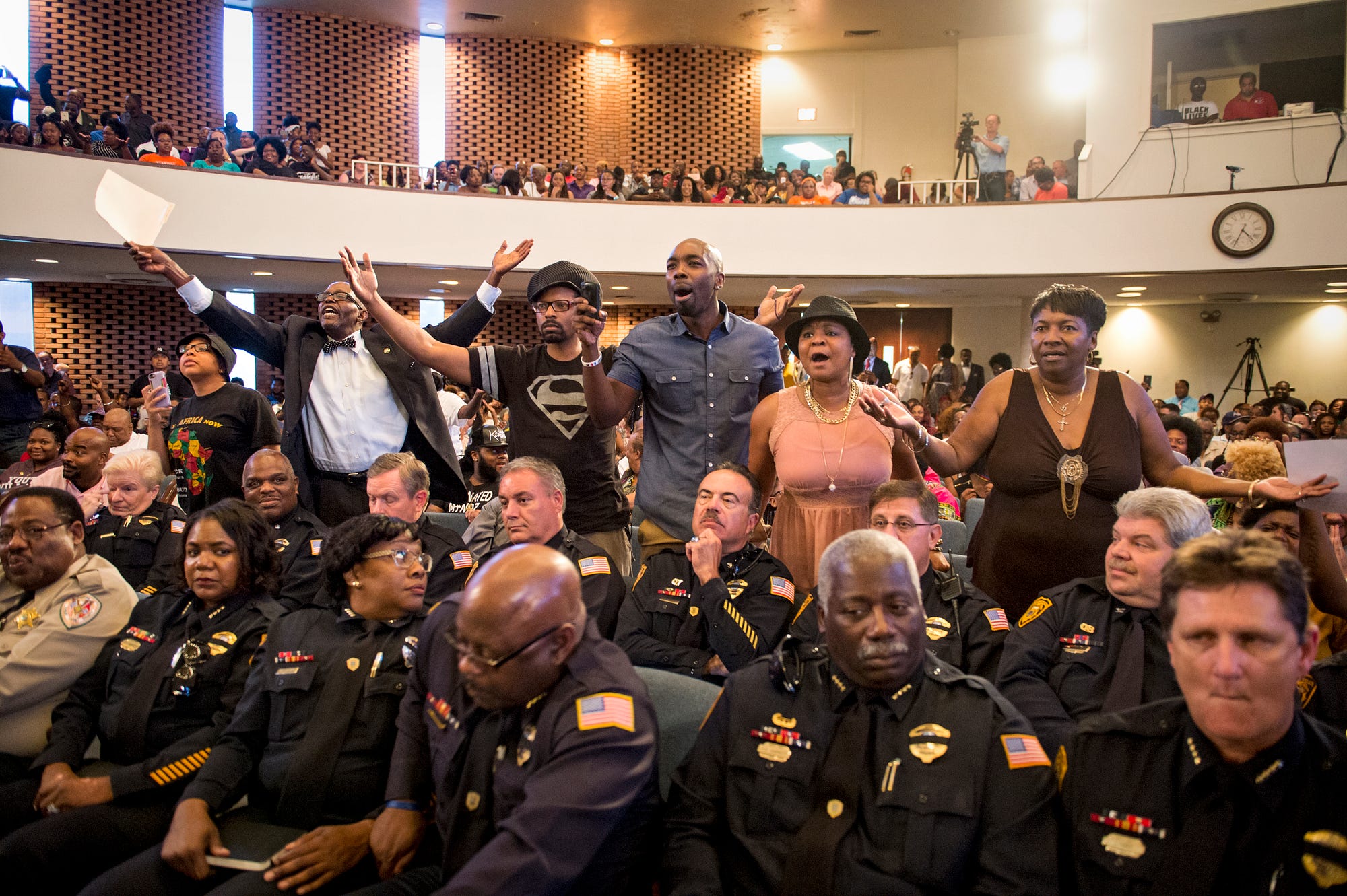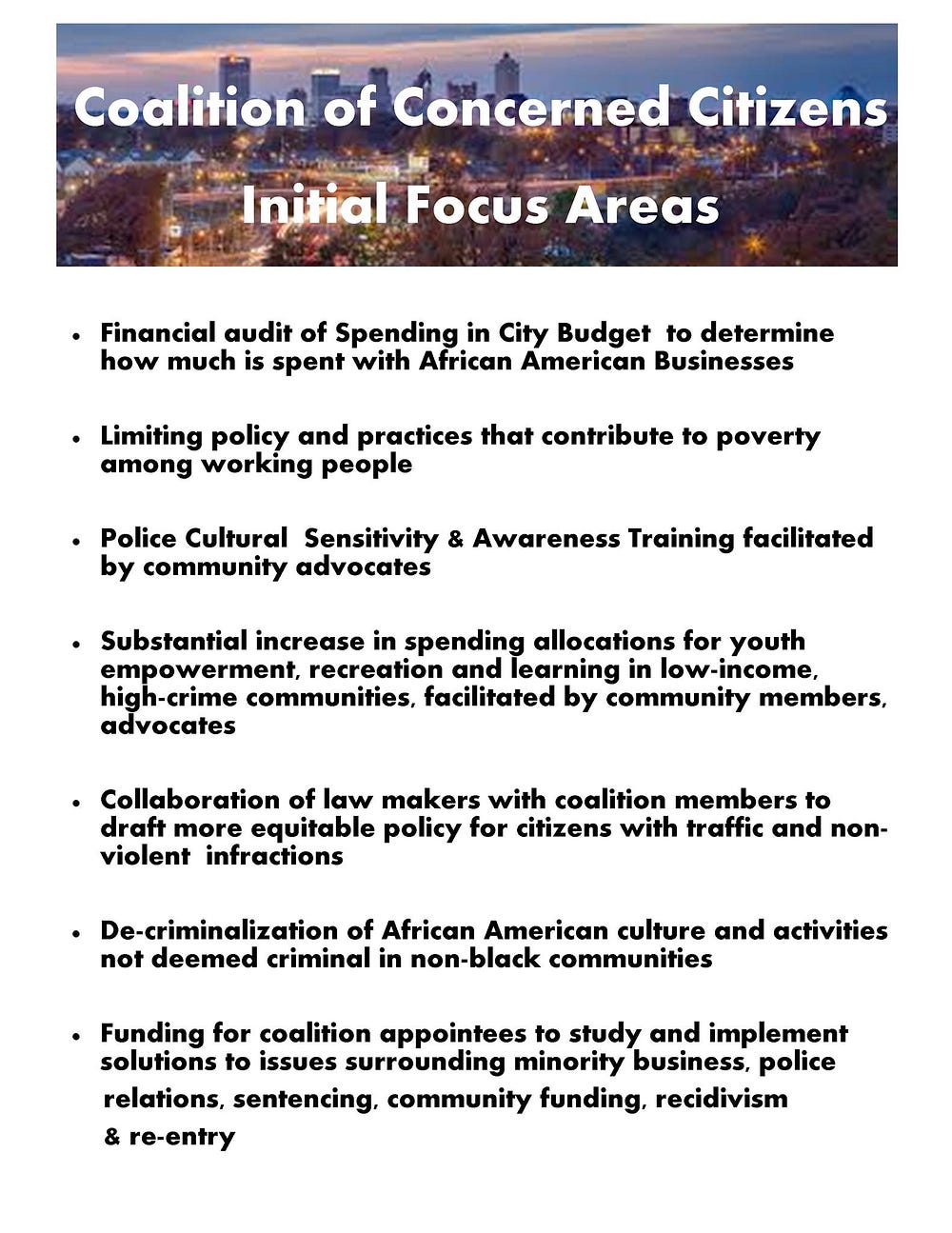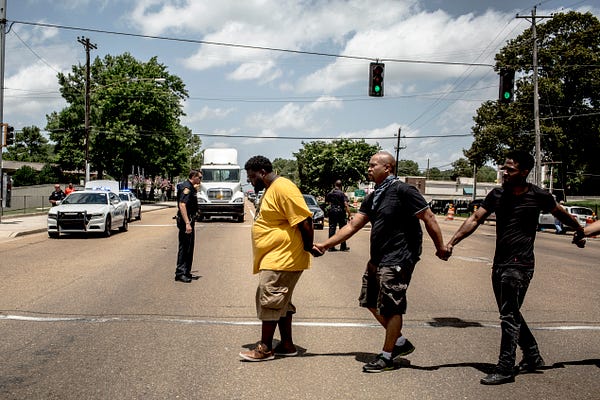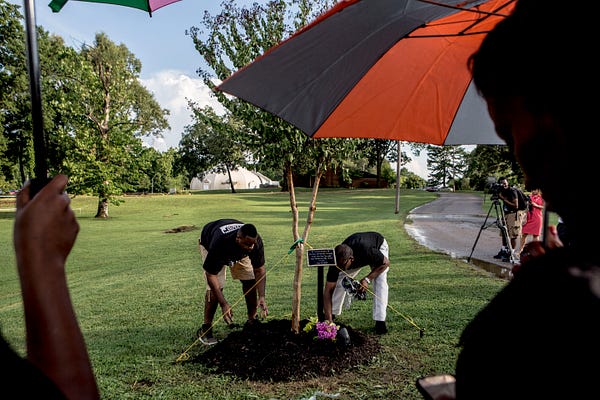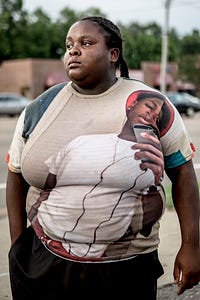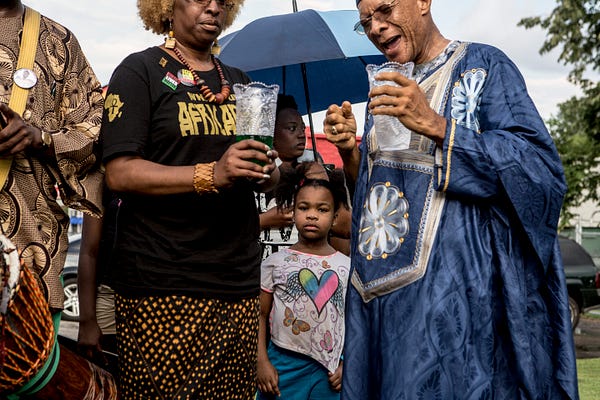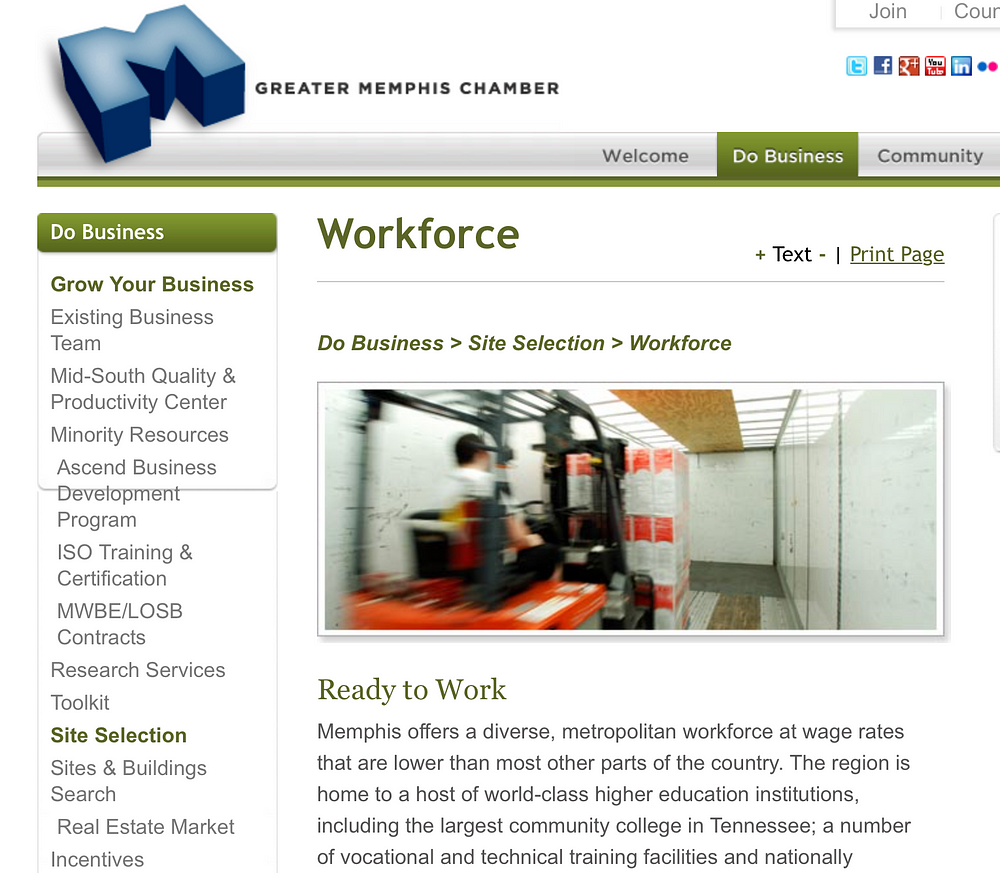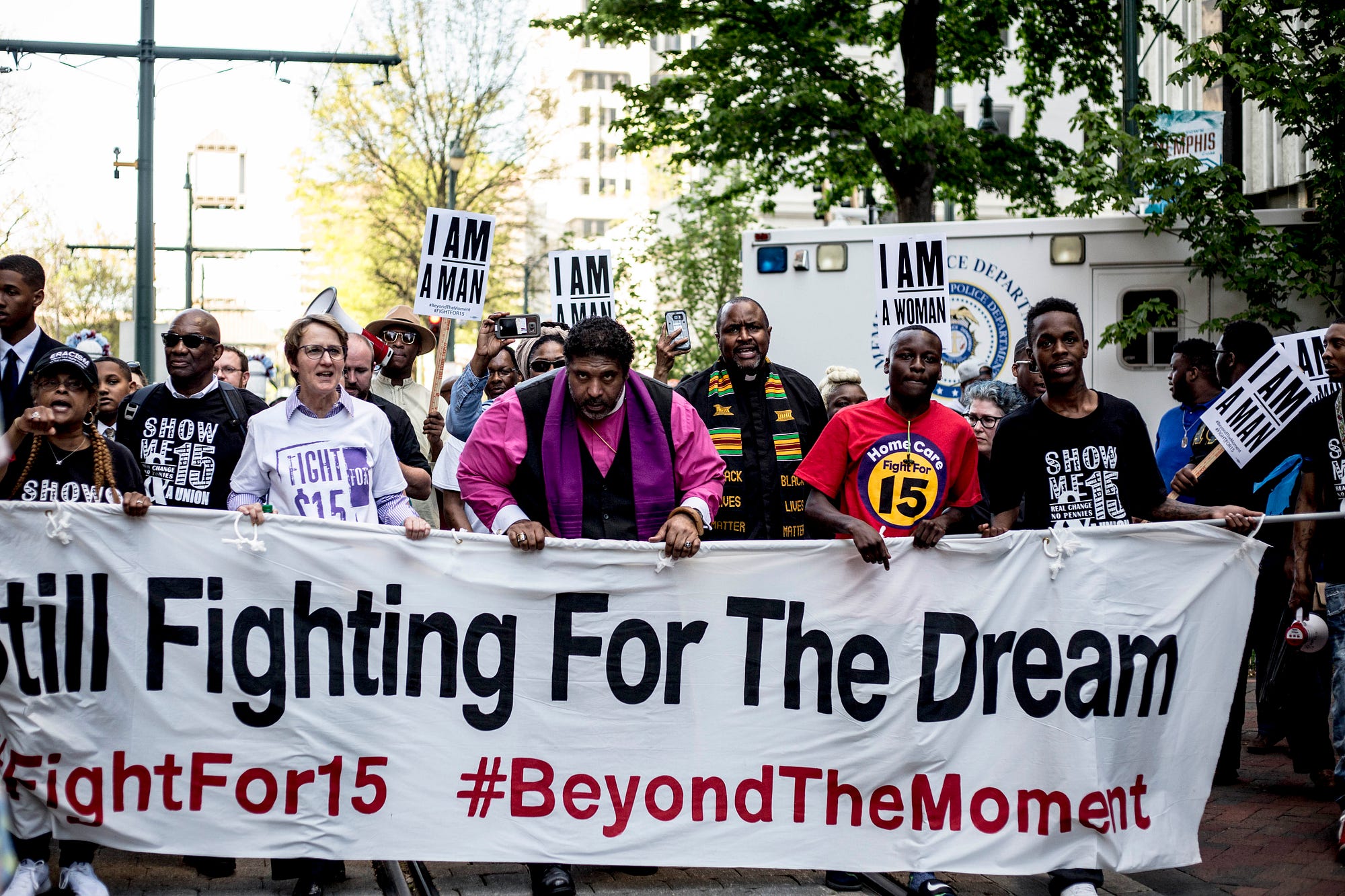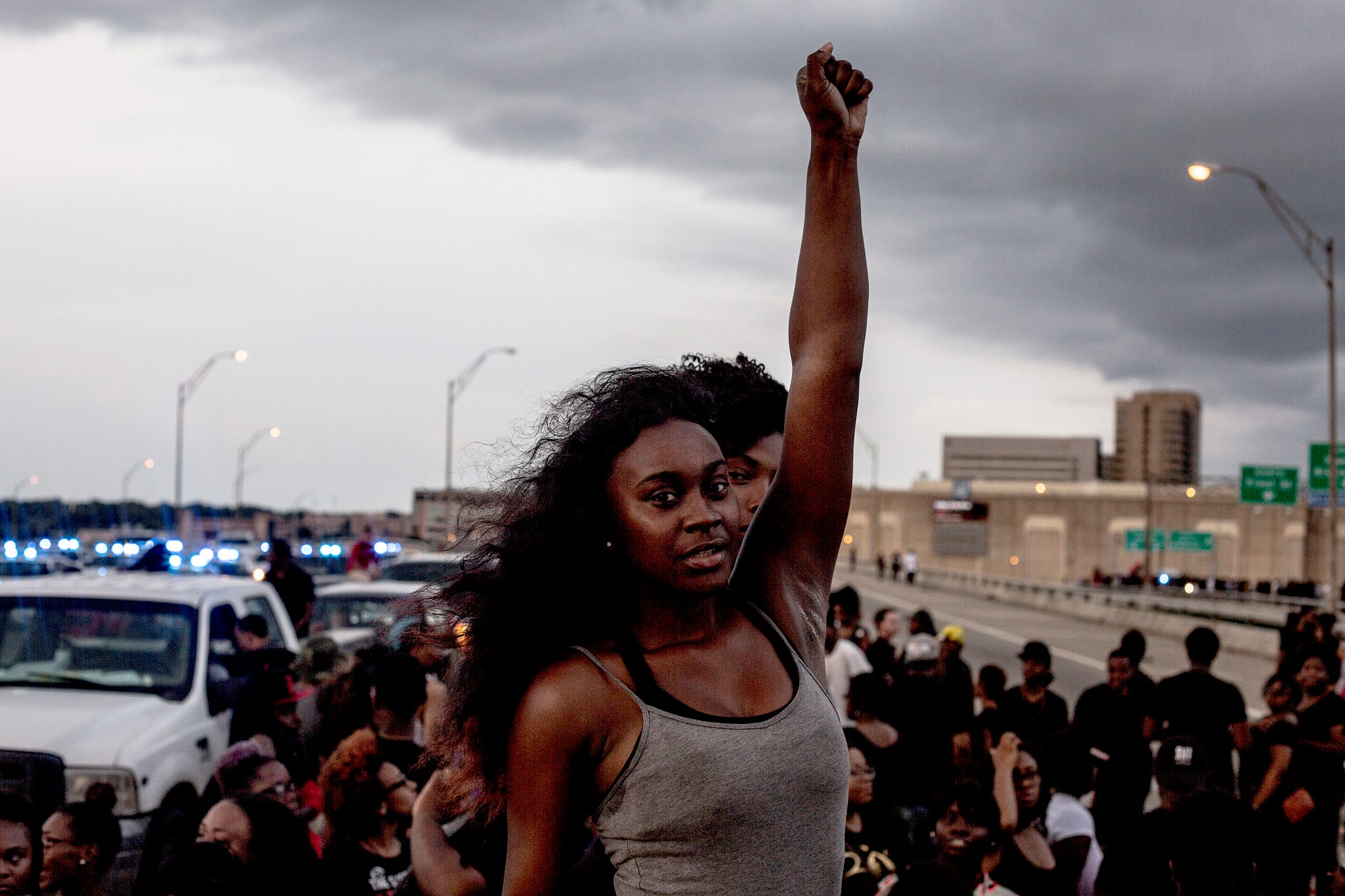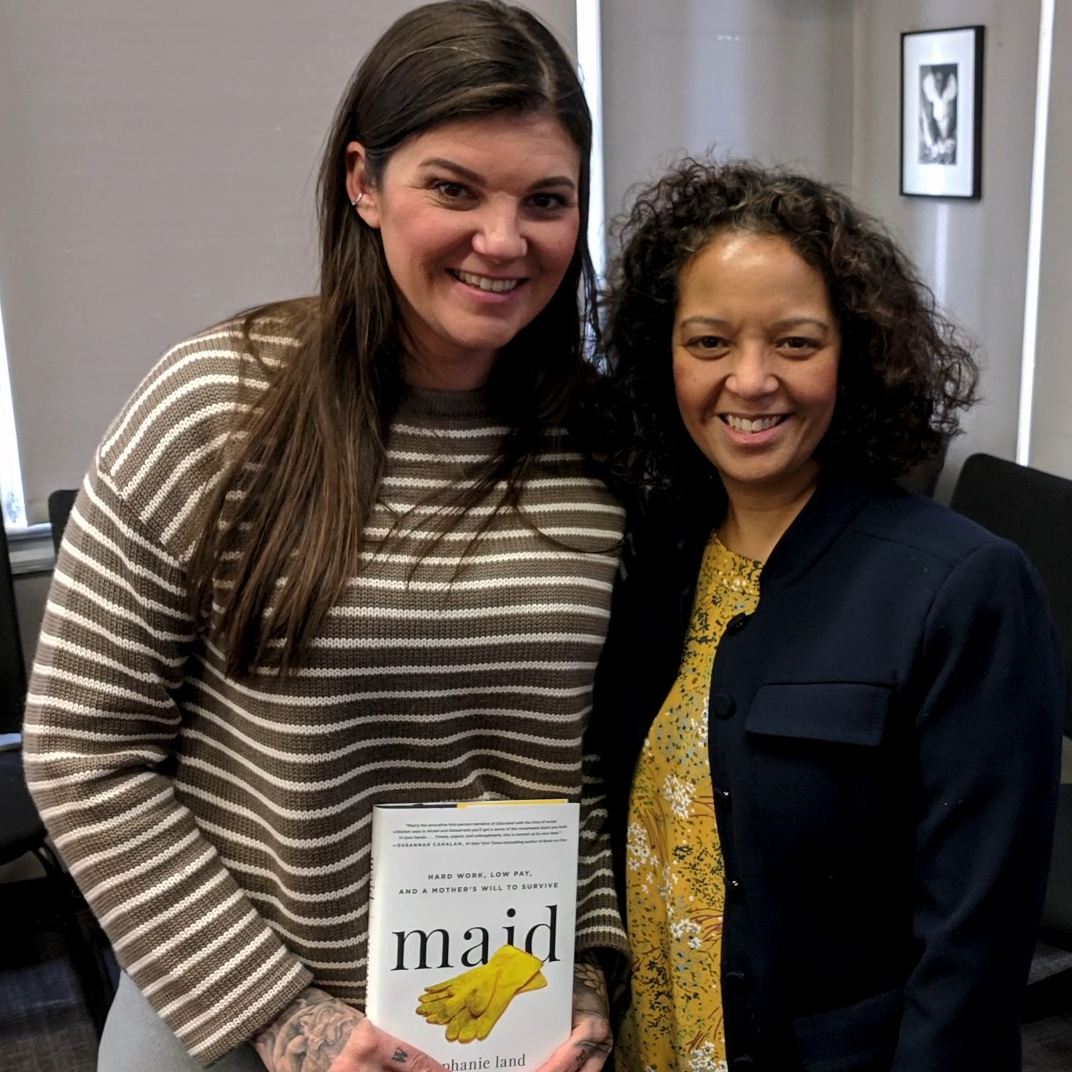Change Wire
Visit Community Change’s platform for the stories of real people making real change, featuring the op-eds, videos, photo essays, audio stories, and podcasts of our Communications Fellows, staff, and partners.
Community Change proudly recognizes a staff bargaining unit affiliated with IFPTE Local 70, a union for non-profit workers.
This article originally appeared on MLK50.
On Thursday, the city of Memphis announced it would pay what can only be described as reparations for decades of shorting the retirement funds of black sanitation workers.
At a press conference at the National Civil Rights Museum, Mayor Jim Strickland — the city’s first white mayor in more than 20 years — announced that the city would make up for the shortfall for with $50,000 grants to the 14 living workers and extra retirement contributions to current sanitation workers.
In February 1968, about 1,300 black sanitation workers went on strike to protest unsafe working conditions and unfair treatment. The stalemate with the city drew Dr. Martin Luther King Jr. to Memphis, where he was assassinated on April 4, 1968.
Fourteen of the strikers are still alive; five still work for the city’s public works department.
“This is a nearly $1 million commitment to do the right thing,” Strickland said in a story published on Medium.
To our 1968 sanitation workers: "You matter to the @CityOfMemphis — and to this entire country."
Our announcement: https://t.co/dURLalQPwm
— Jim Strickland (@JStrick901) July 6, 2017
Each of the 14 living strikers will get $50,000, for a total of $700,000. The city will cover the $210,000 in federal taxes that would be owed.
The total — $910,000 — will come from the city’s general fund. And since the workers are also taxpayers, they are paying a part of their own restitution. Something about that doesn’t seem fair.
Say instead of these $50,000 grants — $1,000 for every year since Dr. King’s assassination — the city had put in $1,000 in a retirement account for these sanitation workers in 1968. And say the city had added $1,000 every year afterward.
At a modest 5 percent rate of return and left untouched, each account would have more than $231,282.80 today. (Compound interest is a beautiful thing.)
This is how government-supported racism creates and maintains intergenerational poverty. In this case, the institutional racism was practiced by the city of Memphis, then under the leadership of a wealthy, white, anti-union, segregationist mayor, Henry Loeb.
It is no accident that for every dollar in household wealth the average white family has, the average black family has six cents.
Always remember: The system does exactly what it was designed to do.
$6+ million for police, >$1 million for sanitation workers
Strickland, who has three times the PR staff as did his predecessor, is very concerned about optics. His administration knows the nation is watching to see whether the 50th anniversary of King’s assassination will be met with window dressing or systemic change.
And for that, I want to applaud this well-intentioned move. The City Council will consider the proposal at its meeting Tuesday.
But these workers have not been made whole. This is insufficient for the debt that is owed.
One of the sanitation workers still on the job, Rev. Cleo Smith, told me today he thought $100,000 would come closer to fairness, although he was quick to thank God for the money he’ll receive.
“It’s better than nothing,” he said.
But that gratitude, while admirable, reflects an attitude pervasive in Memphis: Victims of institutional racism, should be glad for whatever crumbs the power structure throws their way.
After all, it’s better than nothing.
And remember, earlier this year the mayor raised $6.1 million from donors he will not name to fund bonuses for officers who stay with the Memphis Police Department. The money was funneled via a grant from the 50-member Shelby County Crime Commission, where 75 percent of the members are white men in a county that is 54 percent African-American.
And remember, MPD remains under a 1978 federal consent decree for its illegal monitoring of citizens who were merely exercising their First Amendment rights to protest. Those citizens included King, public school teachers, black college students and supporters of the sanitation workers’ right to organize.
Also remember: The mayor inherited this — he did not create it. But communities find non-public dollars to do whatever they want to do. In recent years, Memphis found $12 million in private money to light a bridge, secured $5 million from a foundation to “reimagine” a Downtown park and ginned up $.61 million to expand the police state.
It will take 238 years for the average black family to build the same amount of wealth of the average white family. From The Nation’s 2016 article about new research on the wealth gap:
“[Economist] Thomas Picketty said that, left uninterrupted, we would move toward a hereditary aristocracy of wealth,” says Chuck Collins, one of the study’s authors. “What he didn’t say is that in the United States, that would be almost entirely a white aristocracy of wealth.”
This is not an accident. The wealth gap is largely the creation of racist public policy. It will take anti-racist public policy to solve it.
Change Wire
Visit Community Change’s platform for the stories of real people making real change, featuring the op-eds, videos, photo essays, audio stories, and podcasts of our Communications Fellows, staff, and partners.
Community Change proudly recognizes a staff bargaining unit affiliated with IFPTE Local 70, a union for non-profit workers.
This article first appeared on The Progressive.
The June 21 shooting of a black police officer in St. Louis County by another officer has been described as “friendly fire.” That’s a laughably absurd euphemism for this latest racial incident.
A 38-year-old off-duty officer, with eleven years on the force, heard a commotion in his north St. Louis neighborhood, so he grabbed his service pistol and went to see what was up.
Cops do that. We praise them for that kind of dedication, particularly when shots are fired.
The commotion he heard was the end of a car chase involving three black males in a stolen car. Police say one of the suspects shot at police, and they returned fire, wounding one suspect in the ankle. Two of them were arrested; a third suspect evaded capture.
The off-duty officer approached the scene. According to the police account, “two officers challenged the off-duty officer and ordered him to the ground . . . he complied.” However, the off-duty cop was recognized by the two officers at the scene, and they told him to “stand up and walk toward them.”
And then a most bizarre thing happens. A third cop saw the off-duty officer, whom he didn’t recognize, walking toward his fellow officers and “discharged his weapon.” Why? Because he “feared for his safety.”
The off-duty officer, who has not been named, was treated for the wound and is recovering. Seven other officers are on administrative leave pending the outcome of an investigation.
The sad truth is that when I hear stories like this, I am no longer surprised. I’ve grown accustomed to them, to the mixed narratives, carefully crafted statements, official calls to let investigators sort it out.
The off-duty officer in St. Louis was shot just days after a Minneapolis jury acquitted Officer Jeronimo Yanez from all charged related to the death of Phlando Castile, a black cafeteria worker who was shot to death in his car in front of his girlfriend and a four-year-old child.
Yanez, who was employed by a small suburban police department, said he feared for his life. People who knew Castile, including the teachers and kids in the school where he worked, describe how unscary he was.
On the same day that the black officer in St. Louis was shot, a jury in Milwaukee found a former officer not guilty in the shooting death of a black man who, video evidence showed, had just tossed away his gun. The former officer, who was also black, said he was afraid that the man was reaching for another gun.
“Feared for my life” is the go-to excuse, accepted in the court of public opinion and by juries, when considering the deaths of black men. By society’s standards, being black constitutes reasonable suspicion that you are a violent criminal. No wonder we black men are in a heightened state of anxiety when we see police officers.
On average, sixty-four police officers a year are murdered, according to FBI data from 1980 to 2014. (In reality, police officers are more likely to die in accidents or duty related illness, such as a heart attack.) White males were responsible for more than half of the felonious deaths of police officers.
Meanwhile, police shoot and kill about 1,000 people a year. (In Great Britain, police have shot and killed less than 40 people since 2000.)
Harvard economist Roland G. Fryer Jr., who is African American, reported last summer that his analysis of more than 1,300 police shootings between 2000 and 2015 yielded no evidence of racial bias. He told The New York Times it was “the most surprising result of my career.”
But Fryer’s investigation also found that, even when “compliant,” blacks were more likely than whites to be recipients of non-lethal force, including having a gun pointed at them and being arrested without charge.
Instead of celebrating his finding of non-bias in police shootings, Fryer told the Times that the misuse of force only exacerbates the belief among black youth that they face unequal treatment. “It’s hard to believe that the world is your oyster if the police can rough you up without punishment,” he said.
Add the “friendly fire” incident in St. Louis to the list of reasons black people have for fearing the police—even when they are police themselves.
Fred McKissack grew up in St. Louis. He is a communications fellow with the Center for Community Change.
Change Wire
Visit Community Change’s platform for the stories of real people making real change, featuring the op-eds, videos, photo essays, audio stories, and podcasts of our Communications Fellows, staff, and partners.
Community Change proudly recognizes a staff bargaining unit affiliated with IFPTE Local 70, a union for non-profit workers.
This article first appeared on The Progressive.
How many Americans will be impacted by the GOP’s Obamacare repeal legislation, drafted under veils of secrecy? How many will suffer the consequences?
Probably everyone.
But the harshest impacts will be felt by those Americans who are already the most vulnerable. Individuals and families who need maternity care, emergency services, or mental healthcare treatment will no longer have those services guaranteed. Twenty million Americans who are low-income and rely on Medicaid services that they received under Obamacare will be at great risk of returning to the frightened lives they led in the past. They’ll be uninsured.
I know what that’s like because I have spent most of my life as an uninsured man. I have known a time when health care services and the ability to obtain prescription drugs depended primarily on state funding and state law. Some states provided low income service; some provided minimal services, or none.
But then, under Obamacare, thirty-two states expanded access to Medicaid. Since 2012, I have been enrolled in a Medicaid plan that has provided quick access to check-ups, prescription drugs, and cancer treatment (which I need).
The thought of going back? It’s unimaginable. The idea of returning to a time when I was effectively uninsured? It’s as frightening as the idea of returning to the days of poll taxes at the voting booth.
I am among the twenty million Americans who are scared—and even in our calmer hours we’re hanging on the verge of disbelief.
Three weeks after the presidential election, I received a check-in visit from my care coordinator, Lois, who works for United Healthcare, my Medicaid provider.
I have a long history of extraordinarily high blood pressure, and issues with kidney and prostate cancer. Lois “checks in” every three or four months to see if I have been taking my medications and if I have any new health issues. She appraises how she can help.
Lois’s job is to provide preventive care and give people like me some sense of confidence and normalcy with regard to our health issues. Her position was created by Obamacare, which has pioneered a more holistic approach to health.
During our check-in, Lois went through her usual questionnaire. “Have you been having mobility issues?” “Have you been anxious, or stressed?” Usually I answer with a nonchalant “nope.” But this visit was different. I couldn’t stop myself. I blurted out, “So this is all going to end soon, I guess.”
Lois’s expression became overtaken with worry. “I just can’t believe that could happen,” she told me. “He can’t leave twenty million people without health care. He can’t.”
Now it looks as though the answer to that question is, “Yes, he can.”
In early May, the House passed an Obamacare repeal bill, which polls showed was hugely unpopular. Even Trump eventually acknowledged that the bill, shepherded through by Speaker Paul Ryan, Republican of Wisconsin, was “mean.”
GOP Senators subsequently tried to curtail the public outcry by promising a better bill and then hammering one out in closed sessions. Democratic Senator Chuck Schumer of New York said the Republicans kept their bill “under the cover of darkness because they’re ashamed of it, plain and simple.”
And no wonder. The version that was released Thursday, one week before a planned vote, includes no substantial improvements on the House’s bill.
Twenty million or more low-income Americans who received care during the Obama years have been returned to a situation of fear and insecurity. The Republicans were unmoved by appeals to their sense of decency. At this point, only massive protest and extreme resistance can stop them.
Darryl Lorenzo Wellington is a writing fellow at the Center for Community Change
Change Wire
Visit Community Change’s platform for the stories of real people making real change, featuring the op-eds, videos, photo essays, audio stories, and podcasts of our Communications Fellows, staff, and partners.
Community Change proudly recognizes a staff bargaining unit affiliated with IFPTE Local 70, a union for non-profit workers.
This article originally appeared on Albuquerque Journal.
If the GOP-led House and Senate pass Donald Trump’s proposed budget that calls for slashing $800 billion from Medicaid, I am scared I will die.
I know that is blunt, but I struggle to make ends meet and I have a pre-existing condition: cancer. I cannot afford the health care I need on my own. I am alive because of the surgery, medicine and treatments I receive through Medicaid.
I am also a single man with no children, which means that if Trump’s proposed budget passes, I would probably be one of the first people knocked off the health care rolls.
For the past several years, Obamacare has given Americans like me a respite from the cycle of fear and anxiety that comes with being sick and not having the money to pay for care. But now, we may be shoved back into the dark, confusing and frustrating maze I know too well.
The Congressional Budget Office estimated 23 million Americans will lose their coverage under a plan that will eviscerate federal funding for Medicaid by the year 2020 by replacing Obamacare’s commitment to providing universal health care coverage with a program that inadequately allocates states “block grants” and insufficiently funds Medicaid services for low-income children and the disabled.
I wonder if Trump, his wealthy advisers and his GOP supporters would understand my story.
In 2011, I was in a hospital room in New Mexico following a surgery that removed a cancerous kidney. I had traveled a long, wayward path toward finally having this life-saving surgery. At first, I slept badly; sometimes my surgical incisions burned all night.
I dreamed … the post-surgical incisions lining my abdomen were markers on a map. The map depicted several paths that led to sickness, calamity or death. One route led to safety. … I woke up understanding that the dream was metaphorical. (It) depicted the treacherous roads traveled by the uninsured, especially before Obamacare. …
My story had begun years earlier in Charleston, S.C., a southern state with an inadequate budget for health care for the uninsured.
In 2006, I worked as a restaurant employee and I lacked health insurance. So I visited to Charleston’s Franklin C. Fetter health center for check-ups. Community Change is the main hub of care for the city’s poor. The friendly, casual staff was skilled in the art of interpersonal interactions and kept their good humor, even when they discovered my abnormal blood pressure readings.
The clinic doctor believed I needed to have a heart stress test. He advised that the procedure would cost $3,000, but maybe if I went to the local medical university I could “work something out.” That is code for “debt I could not afford.” …
Four years later … I relocated to New Mexico. I had no idea then that the decision would save my life. … I did not know that my high blood pressure was symptomatic of a failing kidney.
Within a year after I arrived, I ended up in a hospital emergency room. I was close to having a stroke. However, rather than wishing me good luck with the hope I could “work something out,” New Mexico did a better job as a state funding health care for the uninsured. The bureaucratic process was rough and slow, but I received care.
I was able to see specialists and get that needed stress test, an MRI and a CT scan. The final diagnosis? A cancerous cyst covered my kidney. Immediate surgery was necessary.
That was how I came to be recuperating in the hospital, bobbing in and out of consciousness and having a dream that depicted “the health care labyrinth” in which the difference between health care or hopelessness was a state line away.
New Mexico consistently rated only a few points higher than South Carolina on the Commonwealth Fund health care quality and access listings. In 2015, the Commonwealth Fund rated South Carolina 40 – 10th from the bottom – and New Mexico 33. Seven points that made a huge difference between life and death.
I do not believe Trump and Republican lawmakers fully appreciate how drastically the Affordable Care Act lowered stress, worry and hopelessness in the states that accepted the Medicaid expansion. It has only been since the expansion that I received regular appointments, check-ups, cancer treatments and follow-up surgery deemed necessary. …
Twenty-three million Americans who could be covered will become uninsured. They may discover when they need help that they live in the wrong place or need assistance at the wrong time. They will wander lost in the health care labyrinth.
Again.
***
Darryl Lorenzo Wellington is a writing fellow for the Center for Community Change.
Change Wire
Visit Community Change’s platform for the stories of real people making real change, featuring the op-eds, videos, photo essays, audio stories, and podcasts of our Communications Fellows, staff, and partners.
Community Change proudly recognizes a staff bargaining unit affiliated with IFPTE Local 70, a union for non-profit workers.
This article originally appeared in Prairie Homeboy Companion.
I hadn’t thought about Henrik Ibsen’s “An Enemy of the People” in quite a while. Yet, I couldn’t help but think about the play as I read about the hatchet to be taken to the Great Lakes Restoration Initiative.
Details of the administration’s budget plans propose slashing the initiative’s funding by 97 percent. Lake restoration is going to take more than $10 million a year.
Journalists are the people’s enemy say the president and his aides. It’s an easy soundbite that might be juxtaposed in history when weighed against policies like this.
An outgrowth of President George Bush’s 2004 Executive Order creating an intergovernmental task force, this Environmental Protection Agency initiative got underway six years later as a way to undo a century of harm to the world’s largest fresh water system that provides more than a million jobs and tens of millions of dollars in annual salaries and revenue.
“An Enemy of the People” is a moral argument about competing professional and personal oaths, as well as contesting interests — public health versus economic stability. The play highlights the complications and contradiction of real life, and the alienation of people who stick to their principals in the face of powerful people. Things true in nineteenth century Norway or twenty-first century middle America. (Coincidentally, the local newspapermen chicken out when it comes to exposing corruption.)
Today’s fight is about the contradictory role of government: chop government reach to hasten job creation; preserve a natural resource thrives long past the span of a presidency or a generation.
Since 2010, $2.2 billion has been spent of projects, an investment lauded by Indiana’s Hoosier Environmental Council.
“Every dollar invested in Great Lakes restoration generates between $2 (Brookings Institute) and $6 (Grand Valley State University) in economic returns,” according to the council statement in 2014.
The Lakes create a combined 1.5 million jobs, $50 billion in annual wages, and $60 in annual revenue. It’s “arguably one of the best investments in the United States budget,” the council says.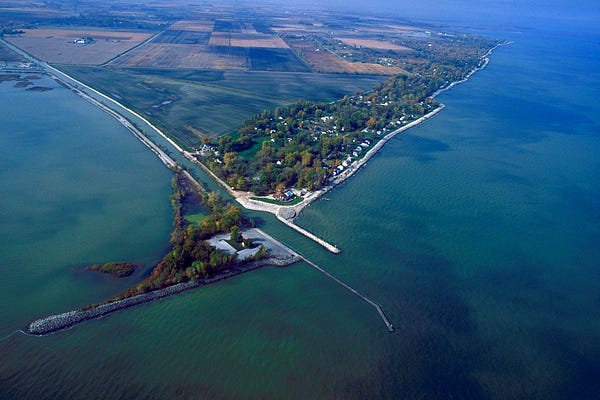
Rather than cut the GLRI, there appears to be a growing consensus that the White House Office of Management and Budget’s gamble on the Lakes is shortsighted.
The move has sparked bipartisan letters from Congressional delegations, denunciation from organization representing 125 U.S and Canadian mayors, and condemnation from newspaper editorial boards and on op-ed pages in both the United States and Canada.
They know that the Lakes are not ecologically robust. And Toledo’s 2014 water crisis highlights the perilous nature of the fragile ecosystem.
A toxic algal bloom forced a three-day shutdown of water to 400,000 people, a bloom traced to the Maumee River that flows out of Fort Wayne.
Fiddling with the GLRI could have consequences that literally float near my home, which is at the southern end of the Great Lakes basin.
A few miles from my home is Eagle Marsh, a beautiful wetland area.
Last year, the Corps of Engineers using GLRI funds completed a nearly two-mile long, seven-and-half feet tall berm to keep the Asian carp from migrating out of the Wabash River watershed into the Maumee River watershed. The carp moved up from the Mississippi River basins.
Normally there is no connection between the Wabash and Maumee, except when there’s heavy rains that cause flooding that connect smaller tributaries between Eagle Marsh and the St. Marys, an historic waterway just one half mile from my front door.
Invasive species like the Asian carp can cause severe damage to the ecosystem, wiping out other fish species and wrecking commercial and recreational fishing industries.
Asian carp would’ve been just one more issue for the St. Marys, one Indiana’s most polluted rivers, loaded with fertilizer phosphorous, livestock runoff, and industrial waste.
The river is one of the two tributaries — the much cleaner St. Joseph is used for drinking water — that form the confluence of the Maumee in downtown Fort Wayne.
The Maumee is the largest watershed of any Great Lake river, and treks northeast for 137 miles into Lake Erie. Along the way it picks up fertilizer phosphorous from farms in Indiana and Ohio.
In 2014, record spring rains pushed the runoff into the river, that year’s algal bloom, and Toledo’s water crisis.
It’s not easy changing practices in places where traditional methods are what have kept families and communities from disintegrating.
Here, like everywhere else, the personal is the political; the political is the personal.
From that perspective, I have lived 21 years of my life within two hours drive to Lake Michigan; in Milwaukee, my wife and I often enjoyed walking from our apartment off Brady Street down to Lake Michigan.
From my home in Fort Wayne, I’m also about two hours drive from the shores of Lake Michigan, and the northern tip of Indiana Dunes National Lakeshore and Indiana Dunes State Park. The shore is a 25 mile expanse between Michigan City and Gary. We’ve had our share of “staycations,” and two have been day trips to the shores.
The Dunes draws nearly 3 million visitors a year from all over the world to a state where tourism is the sixth largest source of income.
The first time, Mark, was just a toddler. It was a spur-of-the-moment look-see on the way home from Chicago. We three decided to wade out and let the waves break against our legs. It was cold. Mark squealed. We al laughed and ran back to the warmth of the sand.
Last year, my wife and son took a day trip together. She’d spent the last six years working on her doctorate at Purdue and working full-time as a sociology instructor. For a middle-income family, a picnic, sun, swimming and laughs at the Dunes were an elixir for the intensity of modern life.
By spoiling the Lakes, the administration may eventually find themselves an enemy by the very people it said it wanted to serve better than Washington had before.
Change Wire
Visit Community Change’s platform for the stories of real people making real change, featuring the op-eds, videos, photo essays, audio stories, and podcasts of our Communications Fellows, staff, and partners.
Community Change proudly recognizes a staff bargaining unit affiliated with IFPTE Local 70, a union for non-profit workers.
This article first appeared on Equal Voice.
I wasn’t trained in this. I didn’t go for school for this. Nobody pays me for this, and nobody expects me to be doing this.
But most evenings, after my son is asleep, and I can’t work at my computer anymore, I get into bed with a sketchbook and pencil. I draw my son somersaulting, the back of his hair. I draw a bathtub. I draw laundry on a line.
These are small images, just fragments. They’re not masterpieces, and I probably will never have time to polish them. As the single mother of a small child, I have such limited time, I probably shouldn’t be drawing at all. I should be making tomorrow’s lunch, or folding yet another load of clothes.
I probably also should, these days, with any spare second I have, be working for justice: fighting for peace, for the rights of other people and for the planet. In the wake of Trump’s election, the fight for social justice is more urgent than ever. It’s also the most overwhelming it has been in my lifetime. Where to start – and where, ever, will it end?
Whatever we’re doing, it feels like we’re not doing enough. This is a familiar feeling for many women, especially women who are mothers.
A friend of mine, a longtime community organizer who is also an educator and mother, asked recently what we are hoping to accomplish with protests.
She’s no stranger to political action, especially when it comes to environmental justice for our fracking-ravaged home in Appalachia.
But she asked: What happens when the marches and strikes are over? What can we do then?
We can never be doing enough.
When I was a child, I painted and drew. One summer, my parents even sprung for a few art lessons, which I took with my sister. A retired art teacher took us into the country and set us up with easels, paints, and a view. His wife made us little cakes to take home after lessons. I remember the cakes, spongy yellow with white frosting, wrapped in foil. I painted a barn, which still hangs in my parents’ dining room.
At night, after my homework was done, I would try to paint my own portrait, stealing glances in a hand mirror. Sometimes, not often, my sister or mother would pose for me. I made collages, cutting up Seventeen magazines. I made stencils, tracing album covers.
I’m not sure when I stopped making art. Certainly by the time I was in college, if not before. I focused on my major, which was English; my career, which was writing and teaching. Then I focused on my marriage. When that failed, what was left to focus on?
I came back to art because I had nowhere else to go. I had erased so much of myself trying to be a perfect wife, a perfect mother, and I needed to find myself again. I needed to find space to breathe. In order to be strong for my son, I needed to be strong myself. Making art, accessing a part of myself that I thought was lost years ago, helped me do that. It helped me stay me.
It helps me now, when it can feel like so many of the things that matter to me and to my loved ones – equality, the environment – are being lost. Art gives me energy to keep fighting.
Come back to art because you feel broken. Come back to art because you are burdened. Come to creativity because you are voiceless. It can give you the strength, the care, and the quiet fire to keep going.
It might seem like art is distraction. It might seem like art is an escape – and in a way, it is, and should be.
You need a way to turn down the noise temporarily, to tune out for a bit; otherwise you’ll burn out and break further.
Otherwise, if you’re anything like me, you’ll make yourself sick with worry and fear –and that makes us helpless and unable to give.
But in another way, art is not an avoidance. Art is the most plugged in and aware you can be. The art I have always been drawn to, that has made the most difference to me, has been work created by the poor; by people with physical or mental disabilities; by people who struggled with racial, gender, or class oppression. Jean-Michel Basquiat. Alice Neel.
Making art is an act of protest. It is also an act of freedom. While not everything, art is something. It is making a statement that you will go on; that the things you see and experience, no matter how small or insignificant, matter. That you matter.
Keep making art. Keep mattering.
___________
Alison Stine, who earned her PhD, is a writer, visual artist and author, most recently of the novel, “Supervision.” She is a writing fellow for the Center for Community Change. Her work has appeared in The Atlantic, The Nation, The Paris Review and Jezebel.
Change Wire
Visit Community Change’s platform for the stories of real people making real change, featuring the op-eds, videos, photo essays, audio stories, and podcasts of our Communications Fellows, staff, and partners.
Community Change proudly recognizes a staff bargaining unit affiliated with IFPTE Local 70, a union for non-profit workers.
By Chirag Mehta, Senior Policy Advisor, Center for Community Change
Coca-Cola and the soda industry at large are pulling out all the stops to fight Santa Fe, New Mexico residents who want to pass a very small tax on sugary drinks to fund a program that would make preschool available to 1,000 low-income children. Coca-Cola itself has contributed $50,000 worth of support to the PAC fighting the ballot initiative and another $10,000 to an organization questioning the need for the tax.[1] The political action committee opposing a tax on sugary drinks raised over $1 million in monetary and in-kind contributions after receiving a $700,000 cash contribution from the American Beverage Association that represents Coca-Cola and other large soda manufacturers.[2]
The soda industry is conjuring up fears that small corner stores will go out of business and threatening job losses at a local bottling plant to convince voters to oppose the tax.[3] The first impact study on the soda tax in Berkeley, Calif., published last week, however, concluded there is no negative impact on the overall beverage industry, nor to local retailers.[4] But make no mistake, the soda industry has gone in big to stop Santa Fe residents from passing the tax for two reasons: they hate paying taxes, and they know if the tax passes in Santa Fe, the momentum to pass sugary beverage taxes elsewhere will grow. What the residents of Santa Fe and other cities considering such a tax should know is that, with their top executives receiving exorbitant pay packages and giant tax breaks, the soda industry can easily afford to absorb these costs rather than passing costs on to consumers or laying off workers.
The Pre-K for Santa Fe initiative is an important piece of the anti-poverty puzzle
Santa Fe, New Mexico voters will have an opportunity on May 2nd to win preschool services for 1,000 predominantly low-income and Latino children. Voters will get to decide whether to impose a two-cent per ounce excise tax – applied at the distributor level – on soda and other sugar sweetened beverages. The tax would generate nearly $8 million every year to fund a high quality preschool program.[5] After years in which the Governor and state legislators refused to pass legislation that would have doubled funding for early education without raising taxes, grassroots leaders, including parents, owners of small childcare businesses and hard-working teachers joined the Santa Fe Mayor and city council members to address New Mexico’s Childcare and early learning crisis on their own. Who could blame Santa Fe leaders when 33 percent of Santa Fe’s children live in poverty and New Mexico ranks 49th among states in child welfare and education quality?[6] If fully implemented, the preschool program will generate benefits worth at least $3.30 for every $1 in costs, create nearly 200 new jobs in the field of early education, and create a more equitable educational system.[7]
Santa Fe residents are not alone in their desire to tax sugary drinks to fund programs that combat the effects of poverty. Sugary drinks taxes have been passed in San Francisco, Oakland, and Berkeley, California, as well as Boulder, Colorado, Philadelphia, Cook County, Illinois and the Navajo Nation, and are currently being considered in other communities across the country. In most of these localities, the revenue generated by the tax is being used for social and educational services for at-risk communities.
The Soda Industry Is Trying to Have It Both Ways on Taxes
Coca-Cola, along with nearly the entire beverage industry, claims that they cannot afford to pay the cost of the tax and that they will have to pass the entire cost onto consumers.[8] If the soda industry did not grossly overcompensate their executives, did not hoard tens of billions of dollars offshore and if they paid their fair share in taxes, one might be able to believe that the soda companies cannot absorb the paltry two cent per ounce tax. The reality is that the soda industry can afford this tax. What they avoid paying in taxes every year far exceeds what Santa Fe residents are asking the soda companies to pay.
Tax Breaks on Executive Pay
The soda industry does not want to pay more taxes to help pay for preschool education. But they are more than happy to pass onto other taxpayers a significant portion of multi-million dollar pay packages for their top executives. In 2016, the top five executives at PepsiCo and Coca-Cola received a whopping $111 million in compensation.[9] Both companies likely reduced the taxes they will owe by as much as $29 million because of the way they structured the compensation packages.[10]
Coca-Cola and PepsiCo design their pay practices in part to minimize their tax liability. Here is how it works. The U.S. Congress, recognizing that taxpayers should not have to bear the burden for runaway executive pay, passed a law in the 1990s to stop corporations from deducting from their taxable income any pay for their executives above $1 million. Corporations could pay executives what they wanted, but for tax purposes they could not reduce their tax liability by deducting any of the pay considered excessive. However, Congress included a so-called “performance-pay” loophole that allowed corporations to continue deducting the full value of so-called “performance pay”—stock options, bonuses, and the like. As you can imagine, pay packages for top executives are now loaded with fully-deductible “performance pay.” Coca-Cola and PepsiCo, like most other Fortune 500 companies use this loophole to significantly reduce their tax liability by doling out tens of millions of dollars to their top executives every year in the form of performance-based compensation.
- In 2016, the top five executives at PepsiCo took home $64.1 million. By our estimates, PepsiCo may receive an additional tax deduction worth $16.9 million on this pay because of the performance-pay loophole.
- In 2016, the top five executives at Coca-Cola took home $47.7 million. By our estimates, Coca-Cola may receive an additional tax deduction worth $12.4 million on this pay because of the performance-pay loophole.
- Because PepsiCo’s and Coca-Cola’s pay practices take nearly full advantage of the loophole, they shave 26 cents off their taxes for every dollar of compensation going to their top five
Tax Breaks on Offshored Income
The soda industry threatens job losses for Santa Fe residents because of a small tax on soda. At the same time, they shelter tens of billions of dollars from U.S. income tax by sheltering the money in offshore accounts.[11] They could bring that money back to the U.S. to make job-creating investments. Instead, they keep the money offshore.
- By the end of 2015, Coca-Cola reported holding nearly $31.9 billion offshore.
- By the end of 2015, PepsiCo reported holding $40.2 billion offshore.
- Of the U.S. Fortune 500 companies with the most money held offshore, PepsiCo and Coca-Cola rank 16th and 19th.[12]
- If both companies paid a minimum tax rate of 15 percent (the top corporate income tax rate is 35 percent) on that income held offshore, that would generate $10.8 billion in additional U.S. taxes.
Santa Fe Can Help Lead the Way on May 2nd
The soda industry is showing its true colors in Santa Fe, lining up against the health and welfare of children to protect profits for the uber-wealthy. In the age of Trump’s “put corporations before families” agenda, nothing illustrates the cynical greed of the CEO class more than the soda industry spending big-time lobbying dollars to stop 1,000 predominantly low-income and Latino children from having access to preschool. Santa Fe residents should reject the soda industry’s cynical claims against the tax and pass the soda tax to improve the lives of Santa Fe’s poorest families. Other cities will be sure to follow their lead.
Sources:
[1] T.S. Last/Journal North, “Big dollars pouring into Santa Fe’s soda tax election fight,” April 7, 2017. Downloaded from https://www.abqjournal.com/984760/big-dollars-pouring-into-soda-tax-election-fight.html/
[2] Choi, Candice, “Soda group suspends payments to dietitians opposing new tax,” The Seattle Times, October 6, 2016. Downloaded from http://www.seattletimes.com/business/soda-group-suspends-payments-to-dietitians-opposing-new-tax/
[3] Downloaded from http://www.betterwayforsantafe.com/FAQ.aspx on April 23, 2017.
[4] Lochner, Tom, “Berkeley soda tax a sweet success, study finds,” East Bay Times,” April 18, 2017. Downloaded from http://www.eastbaytimes.com/2017/04/18/berkeley-soda-tax-a-sweet-success-study-says/ on April 23, 2017.
[5] Downloaded from http://www.prekforsantafe.org/funding-prek/ on April 23, 2017.
[6] Ibid.
[7] Ibid.
[8] “Voters to Decide on Santa Fe Soda Tax Proposal,” Associated Press, March 9, 2017. Downloaded from https://www.usnews.com/news/best-states/new-mexico/articles/2017-03-09/voters-to-decide-on-santa-fe-soda-tax-proposal
[9] All author’s estimates of top executive compensation and tax deductions based on 2016 Summary Executive Compensation tables and discussion of executive compensation in 2017 Definitive Proxy Statements for PepsiCo and Coca-Cola downloaded from https://www.sec.gov/edgar/searchedgar/companysearch.html.
[10] The possible tax savings for Coca-Cola and PepsiCo was based on the author’s estimates of total fully-deductible performance-based pay and salary that companies likely deducted multiplied by the top marginal corporate income tax rate of 35 percent.
[11] Source for PepsiCo and Coca-Cola reported holdings offshore and Fortune 500 ranking is Phillips, Richard, et al, “Offshore Shell Games: The Use of Offshore Tax Havens by Fortune 500 Companies,” Citizens for Tax Justice and U.S. Public Interest Research Group, 2016. Downloaded from http://ctj.org/pdf/offshoreshellgames2016.pdf.
[12] Ibid.
Change Wire
Visit Community Change’s platform for the stories of real people making real change, featuring the op-eds, videos, photo essays, audio stories, and podcasts of our Communications Fellows, staff, and partners.
Community Change proudly recognizes a staff bargaining unit affiliated with IFPTE Local 70, a union for non-profit workers.
TUNDRA: Cold Journey to Justice is a docu-series that captures the cold climate found in marginalized communities across the U.S. This series will feature interviews with community leaders on efforts they are mounting to combat oppressive policies and systems of injustice on a local, state and federal level. This series will also generate research through brief surveys and qualitative responses. The “best practices” generated from each collective community documented will then be turned into educational organizing programming for the next generation of “Change Agents”.
Episode 1 of Tundra is based in Washington, DC during the Women’s March. The main theme incorporated is resistance art as viewers are given an exclusive look into the underground art scene captured at #CreativeSpaceDC. The first installment of the docu-series features original sounds, exclusive interviews and images by Communications Fellow Jeremiah Chapman.
Change Wire
Visit Community Change’s platform for the stories of real people making real change, featuring the op-eds, videos, photo essays, audio stories, and podcasts of our Communications Fellows, staff, and partners.
Community Change proudly recognizes a staff bargaining unit affiliated with IFPTE Local 70, a union for non-profit workers.
Tuesday’s “Day of Disruption” walkout by thousands of low-income workers underscores that the Fight for $15 movement is undeterred by the change of administration. Earlier this month, voters approved minimum-wage raises for Arizona, Colorado, Maine, and Washington.
What began as a long shot to even liberal labor leaders, the resurgent low-income fight is now bolstered by quantitative research of its success from the National Employment Law Project.
“Since the Fight for $15 launched in 2012, low-wage workers have won $61.5 billion in annual raises through a combination of state and local minimum wage increases together with action by employers to raise their companies’ minimum pay scales,” the report says.
“To put these wage gains in context, this $61.5 billion raise delivered by the Fight for $15 to workers in just a handful of states is more than 10 times larger than the total raise received by workers in all 50 states under Congress’s last federal minimum wage increase, approved in 2007.”
This is welcome news to advocates who have touted the benefits of higher wages for families. But this fight is beyond dignity and fairness. It is about life and death.
Thousands of deaths in New York could have been avoided if the minimum-hourly wage had been $15, say researchers in an article published this summer in the American Journal of Public Health.
“A higher minimum wage may have substantial positive effects on health and should be considered as an instrument to address health disparities,” the authors contend.
Using the 2008 to 2012 American Community Survey, researchers from New York City’s Department of Health and Mental Hygiene performed simulations they say assessed how lives of low-income residents might change with a hypothetical $15 minimum wage. The peer-reviewed report sees a correlation between the life expectancy of low-income workers, particularly minorities, and higher-wage earners who have access to more of the healthcare system including preventative medicine and treatment.
“Our analysis may help increase appreciation for the potential health impact of not only minimum wage but also policies as diverse as those directed at education, labor, and transportation among legislators and the general public,” the report says.
President-elect Donald Trump’s debate stance was that he couldn’t endorse a doubling of the federal minimum wage to $15 an hour. Fight for $15 leaders have focused almost exclusively on municipal and state measures rather than a federal mandate.
Still, it would behoove the new administration to look at the mounting evidence that low-income wages nationwide, but particularly in urban America, which the president-elect has often dubbed as “war zones,” will continue to have a negative effect on current and future generations.
Fredrick McKissack, Jr. is a writing fellow for the Center for Community Change.
Change Wire
Visit Community Change’s platform for the stories of real people making real change, featuring the op-eds, videos, photo essays, audio stories, and podcasts of our Communications Fellows, staff, and partners.




